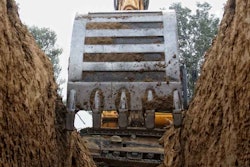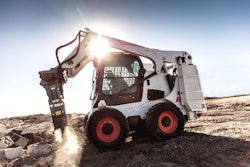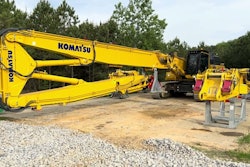To download a PDF of this Safety Watch for sharing or printing, click here.
To download a PDF in Spanish, click here.
A crew was setting anchors in preparation for utility pole placement, using a boom truck with auger. Each anchor was attached to the auger using a coupling, which then used the auger motor to rotate the anchor and screw it into the ground. An anchor began to wobble during the setting process, and a crew member reached out to steady the anchor, unaware the extended boom had touched a 7,200-volt overhead power line.
The anchor was energized, electrocuting the worker. He was pronounced dead from electrocution at the hospital.
A post-accident investigation found the crew member was not a regular employee, but part of a work release program and had no formal training in the utility construction industry. The training was provided on the job, but as a member of the work release program, the worker was unavailable for regularly scheduled safety training meetings.
Additionally, the anchor was a replacement anchor that was more than 2 feet longer than the other anchors used on the project. When the crew tried to set the anchor, the additional length caused it to enter the ground at a difficult angle, creating the wobble that prompted the employee to try steadying the anchor, as well as creating a clearance issue with the overhead power line.
Working around electricity without the proper training, as this crew member did, can be a fatal mistake. Without the proper training, you won’t have the necessary tools to recognize jobsite hazards. The error was compounded by using the longer anchor – material that a jobsite survey would not have accounted for.









